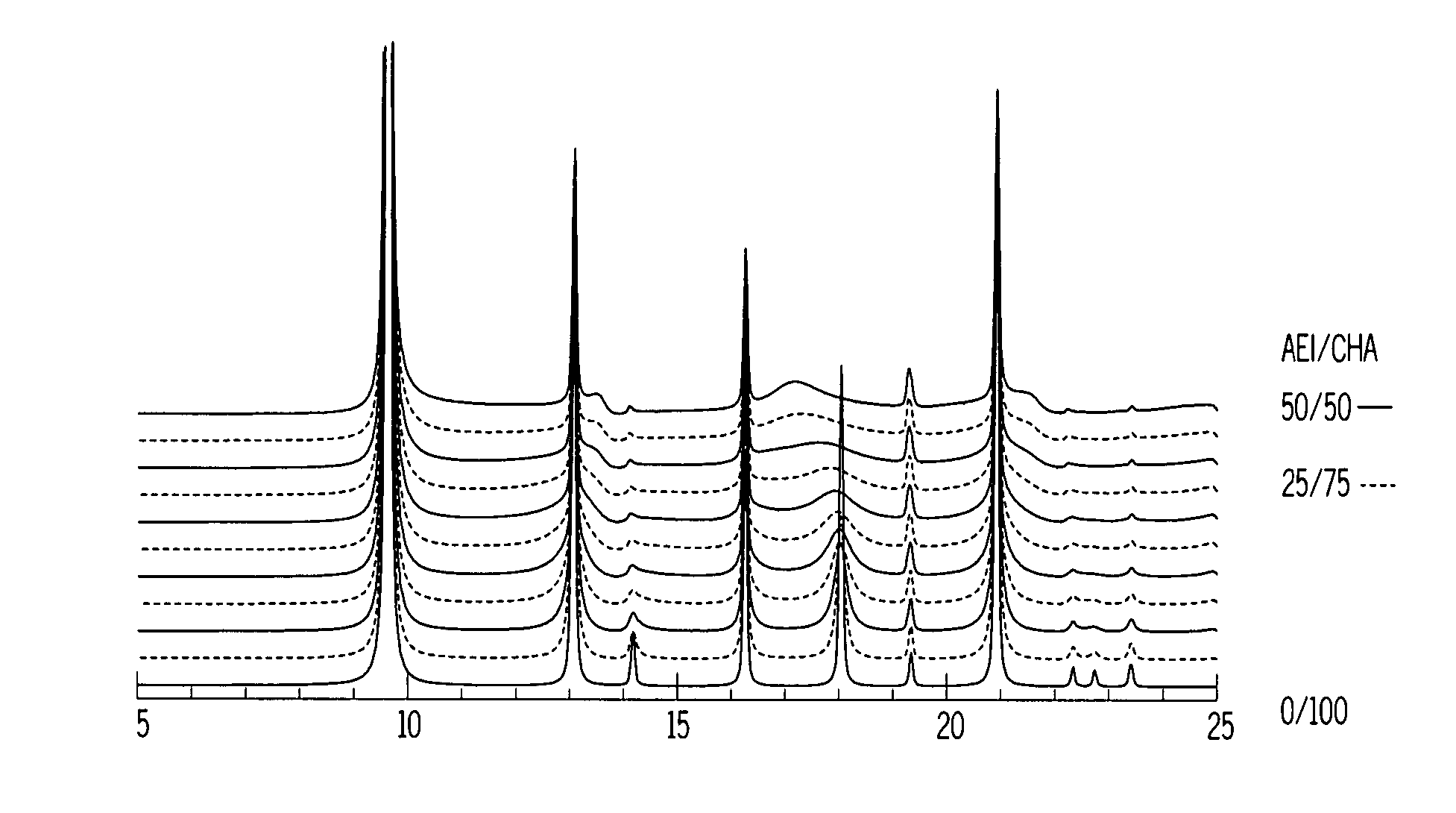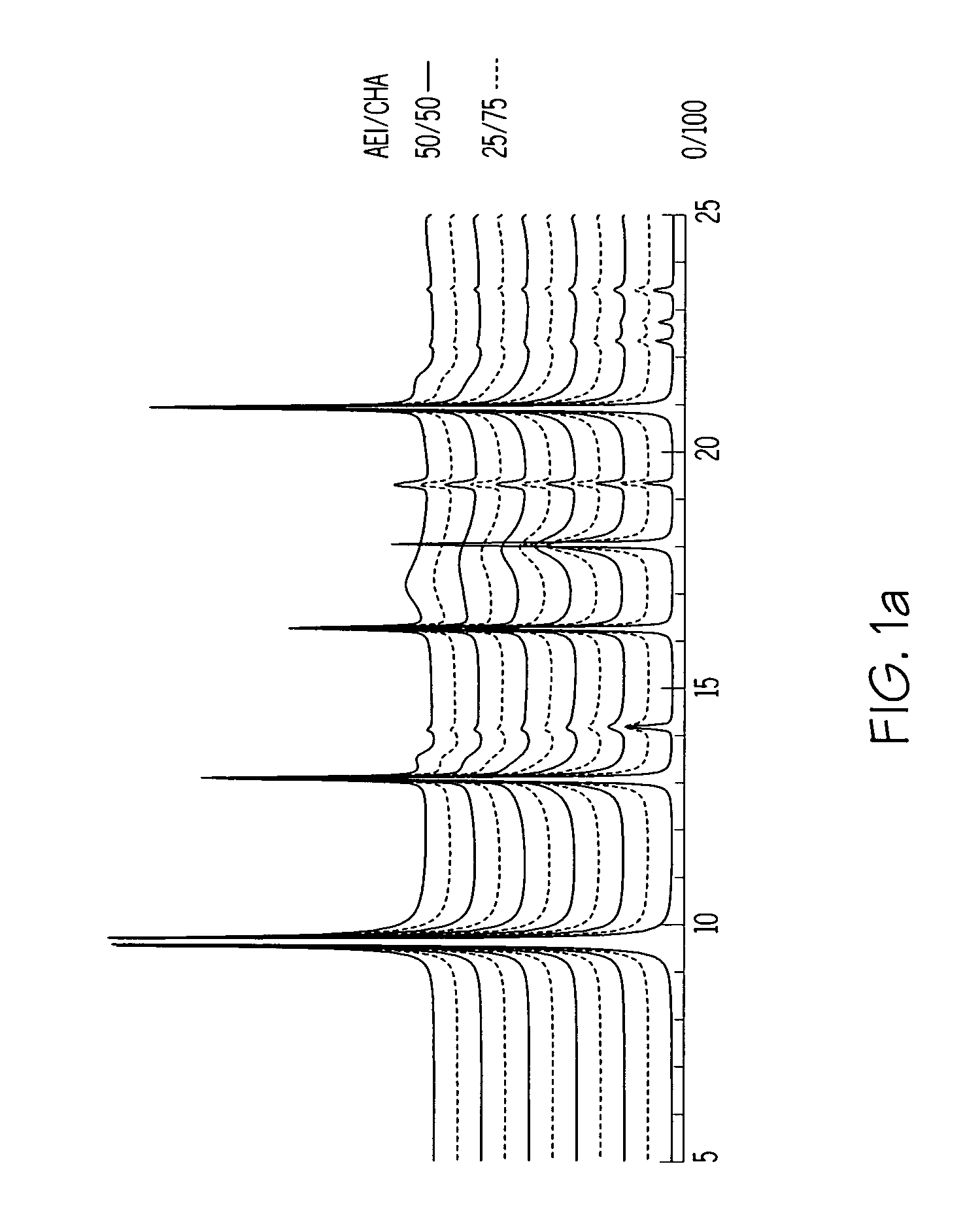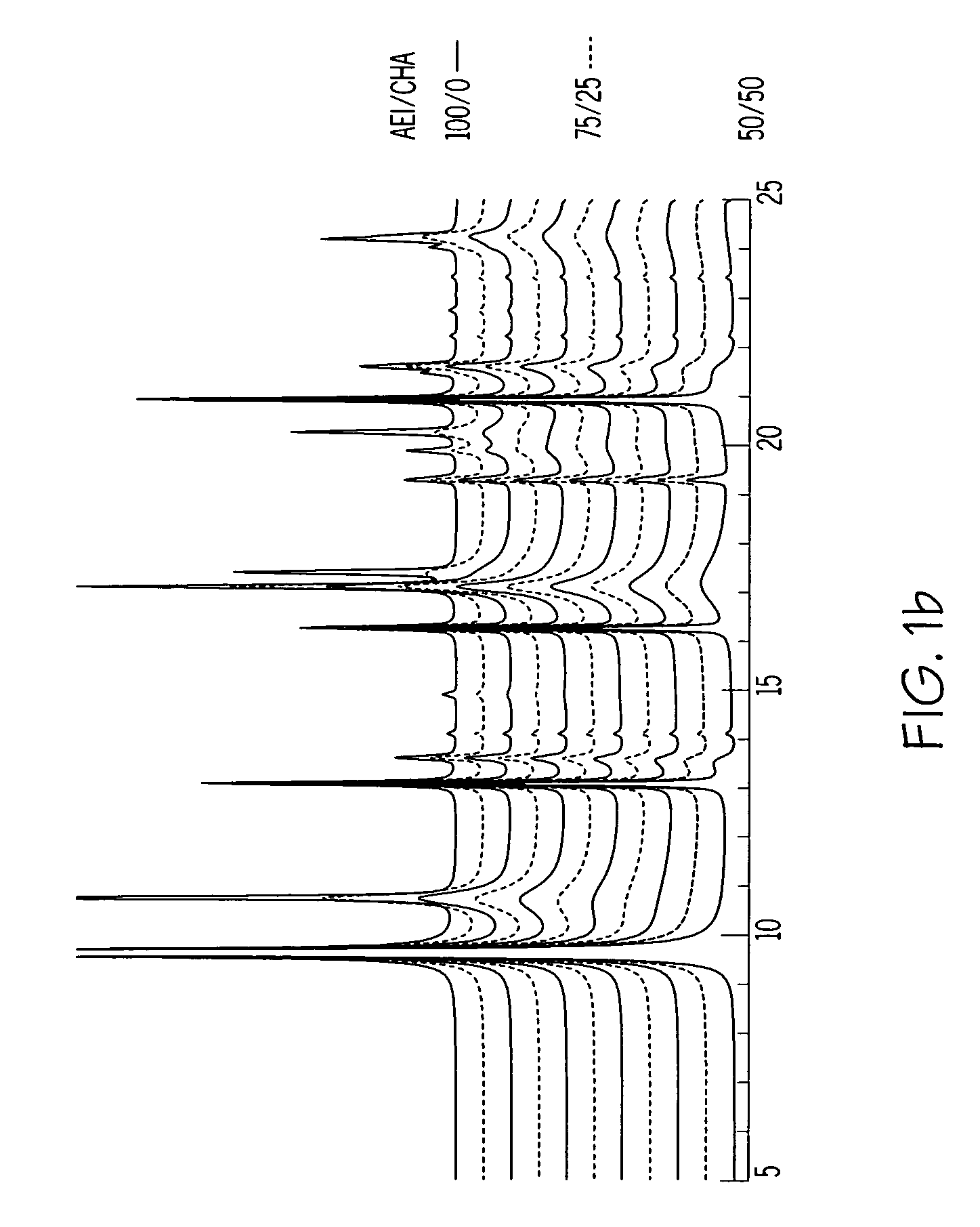Chabazite-containing molecular sieve, its synthesis and its use in the conversion of oxygenates to olefins
a technology of molecular sieve and chabazite, which is applied in the direction of molecular sieve silica polymorphs, silicon compounds, hydrocarbon oil treatment products, etc., can solve the problems of limiting catalyst life, increasing the potential for undesired secondary reactions, and lowering the diffusion rate of reactants and products
- Summary
- Abstract
- Description
- Claims
- Application Information
AI Technical Summary
Benefits of technology
Problems solved by technology
Method used
Image
Examples
example 1
[0089]0.286 ml of a 23.5 mg / ml aqueous solution of Al(NO3)3.9H2O was added to a mixture of 8.060 ml of an aqueous solution of N,N-diethyl-2,6-dimethylpiperidinium hydroxide, DEDMP+ OH−, (0.6008 molar) and 1.000 ml of an aqueous solution of N,N,N-tri-methyl-1-adamantylammonium hydroxide, TMAA+ OH−, (0.5379 molar). 2.400 ml of tetraethylorthosilicate was then added to this composition and the resultant mixture was continuously stirred in a sealed container for at least 2–3 hours at room temperature until all the tetraethylorthosilicate was completely hydrolyzed. To the resultant clear solution was added 0.234 ml of a 48 wt % aqueous solution of hydrofluoric acid which immediately resulted in the production of a slurry. This slurry was further homogenized by stirring and exposure to air for evaporation of water and ethanol until a thick slurry mixture was obtained. Extra water was further evaporated from the slurry mixture under static conditions to give 2672 mg of a dry gel solid havi...
example 2
[0094]The synthesis of Example 1 was repeated in two separate experiments using the same starting materials in the same proportions as Example 1 but with the crystallization temperatures being 135° C. and 175° C. respectively. DIFFaX analysis was conducted as described in example 1 on the Synchrotron X-ray diffraction pattern of the calcined product of the 175° C. synthesis and showed the presence of two intergrown AEI / CHA phases, namely about 78 wt % of a first intergrown phase having an AEI / CHA ratio of 5 / 95 and and about 22 wt % of a second intergrown phase having an AEI / CHA ratio of 95 / 5, which corresponds to a weighted average AEI / CHA ratio of about 25 / 75.
[0095]13C MAS NMR analysis of the product of the 175° C. synthesis showed the presence of DEDMP (the AEI directing agent) and TMAA (the CHA directing agent) in a molar ratio of 50 / 50 in the as-synthesized product. This contrasts with a DEDMP:TMAA molar ratio of 90 / 10 in the synthesis mixture.
[0096]A high resolution transmissio...
example 3
[0097]The synthesis of Example 1 was repeated with the molar ratio of DEDMP / TMAA in the synthesis mixture being 1.0. DIFFaX analysis on the Synchrotron X-ray diffraction pattern of the as-calcined product showed the product to be pure CHA. In addition, 13C MAS NMR analysis showed the presence of only TMAA (the CHAdirecting agent) in the as-synthesized product. A HR-TEM transmission electron micrograph of the product is shown in FIG. 5. No presence of faulting is apparent in the HR-TEM image. The Fourier Transform of the HR-TEM image shows sharp spots and no streaks, which is indicative of a regular stacking and of the absence of stacking faults or twins. No faults were observed in the 500 chards produced for the TEM analysis.
PUM
| Property | Measurement | Unit |
|---|---|---|
| temperature | aaaaa | aaaaa |
| temperature | aaaaa | aaaaa |
| molar ratios | aaaaa | aaaaa |
Abstract
Description
Claims
Application Information
 Login to View More
Login to View More - R&D
- Intellectual Property
- Life Sciences
- Materials
- Tech Scout
- Unparalleled Data Quality
- Higher Quality Content
- 60% Fewer Hallucinations
Browse by: Latest US Patents, China's latest patents, Technical Efficacy Thesaurus, Application Domain, Technology Topic, Popular Technical Reports.
© 2025 PatSnap. All rights reserved.Legal|Privacy policy|Modern Slavery Act Transparency Statement|Sitemap|About US| Contact US: help@patsnap.com



